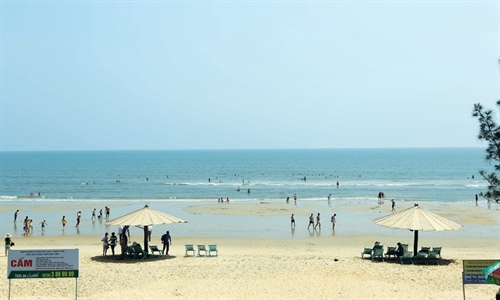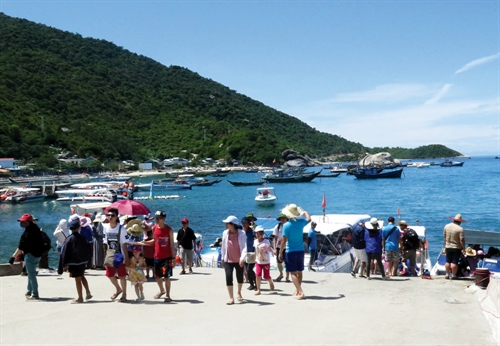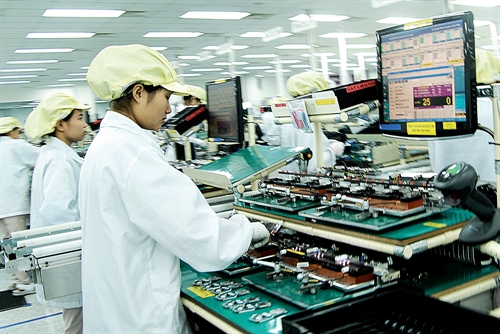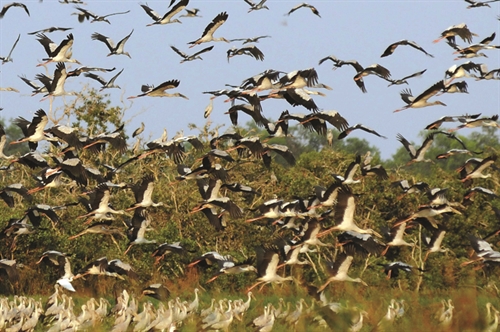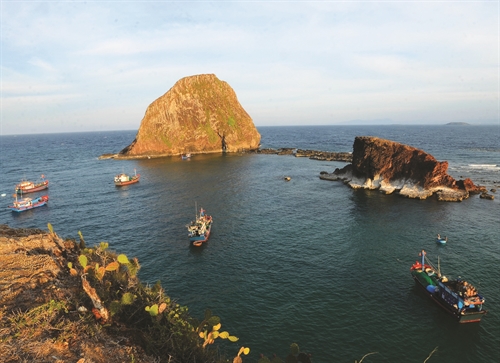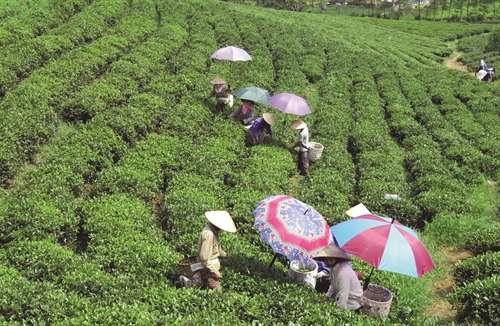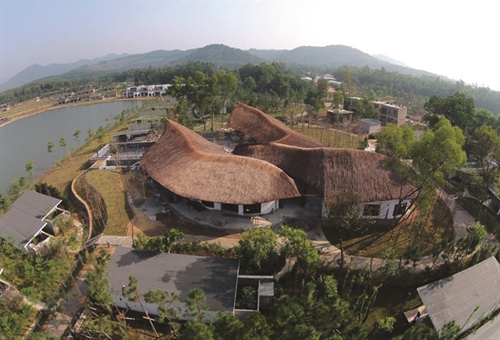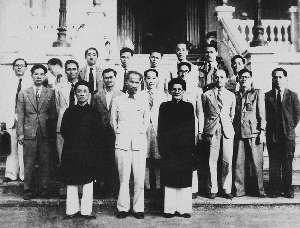Located in the Mekong River delta, Ben Tre province borders Tien Giang province to the north, Tra Vinh province to the south, Vinh Long province to the west and the East Sea to the east. As one of the 13 provinces in the delta, the province is made up of three main peninsulas, namely Bao, Minh and An Hoa, and boasts four rivers of Tien, Ba Lai, Ham Luong and Co Chien and a dense network of canals. Covering almost 2,360 square kilometers, Ben Tre has a population of some 1.3 million and is home to Kinh (Viet) people as the most populous and 25 other ethnic groups. It has a provincial city with the same name and eight rural districts of Chau Thanh, Binh Dai, Giong Trom, Ba Tri, Thanh Phu, Mo Cay Nam, Mo Cay Bac and Cho Lach. With a coastline of 65 kilometers, Ben Tre has big potential for the development of renewable energy, sea economy and tourism.
Hot spots for FDI attraction
Ben Tre has convenient road and waterway systems with Rach Mieu bridge connecting the province with Ho Chi Minh City and the southern key economic region and Co Chien bridge linking the province with other coastal southwestern provinces. The Rach Mieu, Ham Luong and Co Chien bridges on National Highway 60 have helped facilitate the local socio-economic development and attract investment to the province.
The province is now home to two industrial parks covering 240 hectares.
Tu Thi Hong Hanh, Head of the Ben Tre Planning and Investment Department’s Business Registration Office, said in the first half of 2017, Ben Tre granted investment licenses to four new FDI projects totaling USD 196 million and permitted two existing projects to add USD 10.65 million to their registered investment capital. “The USD 180 million 80.5MW windmill farm in Binh Dai district is the biggest joint-venture project between the Asia Petroleum Energy JSC and the Republic of Korea (RoK)’s Doarm Engineering Co. Ltd,” she said.
The province has so far attracted 55 FDI projects with a combined registered capital of USD 823.52 million and the RoK is the top investor in the locality, she added.
Those results are attributable to the province’s twelfth spot in the 2016 provincial competitiveness index (PCI) ranking and sixth spot in the 2016 Provincial Governance and Public Administration Performance Index (PAPI).
At the Ben Tre investment promotion conference 2017 held on July 20, Prime Minister Nguyen Xuan Phuc emphasized the necessity for the province to prioritize the allocation of land areas, supply of electricity, development of transport infrastructure system and provision of high-quality human resources to investors.
The province is the country’s largest coconut producer with 70,000 hectares of coconut trees which also protect Ben Tre from land erosion, salinity intrusion and other adverse impacts of climate change, heard the conference.
Mentioning the famous local specialty - coconut, the PM said he hoped “the province will become a coconut metropolis of Vietnam with a regional-level processing industry and high economic value.”
Vice Chairman of the provincial People’s Committee Truong Duy Hai took the occasion to call for investment in 63 projects in the province in the 2017-20 period. They include tourism, renewable energy, education, agriculture, and building of infrastructure facilities of industrial parks (IPs) and industrial complexes, solid waste and wastewater treatment facilities, trade centers and urban centers.
He went on to confirm that the province would not break the rule but always wish to adopt the most preferential policies on taxes, charges, fees and administrative formalities in favor of investors.
For projects investing in infrastructure of IPs and industrial clusters, investors will enjoy land rental exemption or reduction and preferential tariffs provided for their project land areas. They will also enjoy support equal to 20 percent or 30 percent of ground clearance compensation at most when investing in infrastructure facilities of industrial clusters or IPs, respectively. The maximum land rent period will be 70 years for investment projects in IPs and 50 years for those in industrial clusters.
Agricultural projects eligible for special investment incentives in Ba Tri, Binh Dai and Thanh Phu coastal districts will be exempted from land use levy and land rental during their lifespan. In addition, investors in the three districts will enjoy the most preferential corporate income tax rate of 10 percent for the first 15 years of operation.
Vice Director Chau Van Binh of the Ben Tre Planning and Investment Department (PID) said the province would help enterprises having new projects publish information about their projects free of charge on Dong Khoi local newspaper for three consecutive issues. Investors would also receive support in posting and regularly updating their information on the website of the Startup and Investment Promotion Center of Ben Tre province (SIPC Ben Tre), Binh added.
“Ben Tre’s strengths are not as good as other provinces,” said PID Director Nguyen Minh Canh, emphasizing that the province would carry out administrative reforms and shorten the time for granting an investment license to an investor to just one working day. “In addition to open dialogues with businesses, the provincial authorities will periodically host “business cafe talks” with the latter to hear their recommendations and seek to address their problems,” he added.
Apart from improving the quality of the public service team, the province is proposing to set up the Public Administration Center to help investors complete their investment formalities more quickly.
Ben Tre province is expected to attract USD 223.35 million in FDI this year, quadruple last year’s figure.
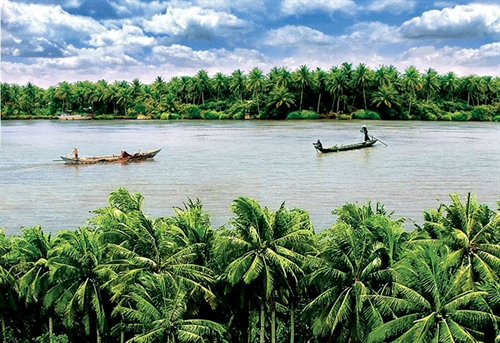 |
| Oc (Hung Phong) isle, the biggest in Ham Luong river, Giong Trom district, Ben Tre province__Photo: Internet |
Hospitality potential
Ben Tre is famous for not only coconut trees but also Cai Mon orchard village in Vinh Thanh commune, Cho Lach district, which is considered the “kingdom of bonsai trees” in the country and the cradle of fruit trees in the south. Its bonsai trees have been exported to the RoK, China and Taiwan.
According to the Ben Tre Industry and Trade Department, the province has recognized 18 craft villages famous for making coconut products and handicraft products and weaving.
Among the best known are An Hiep mat making village in Chau Thanh district, An Thanh coconut fiber processing village in Mo Cay district and Hung Phong coconut straw basket weaving village in Giong Trom district.
Vice Director Tran Duy Phuong of the Ben Tre Department of Culture, Sports and Tourism said the province has so far this year welcomed over 700,000 million tourists, including over 300,000 foreigners, most of whom were from Japan, the RoK, China, France and other Western European countries. “They follow tours, organized by HCM City travel agents, from Ho Chi Minh City to the province,” Phuong added.
Ben Tre has 14 national and 35 provincial historical relics, 1,400 hotel rooms and 500 coconut handicraft product items.
At present, the local hospitality sector is coordinating with HCM City, Hanoi, Bac Lieu and other Mekong River delta provinces in exchanging tourism information and creating new tourism products.
To promote local tourism development, the Tourist Information Promotion Center of the province has recently published the “Specialties of Ben Tre” Travel Handbook in Vietnamese and English. The handbook is to be distributed at conferences, workshops, fairs and exhibitions, aiming to introduce 50 best local products divided in 10 groups, including tourist programs, tourism destinations, restaurants, hotels, homestay accommodations, traditional craft villages, relics and cultural works and coconut dishes, tropical fruits and coconut specialties.
Phuong said the sector expected to receive 1.2 million tourists, including 550,000 foreigners, and earn a turnover of some VND 1 trillion this year.
To achieve these targets, Phuong said the province would restructure the hospitality sector toward professionalism, modernity and sustainable development in line with the market economy’s rules and give higher incentives to tourist service providers, especially those engaged in marine tourism.- (VLLF)
